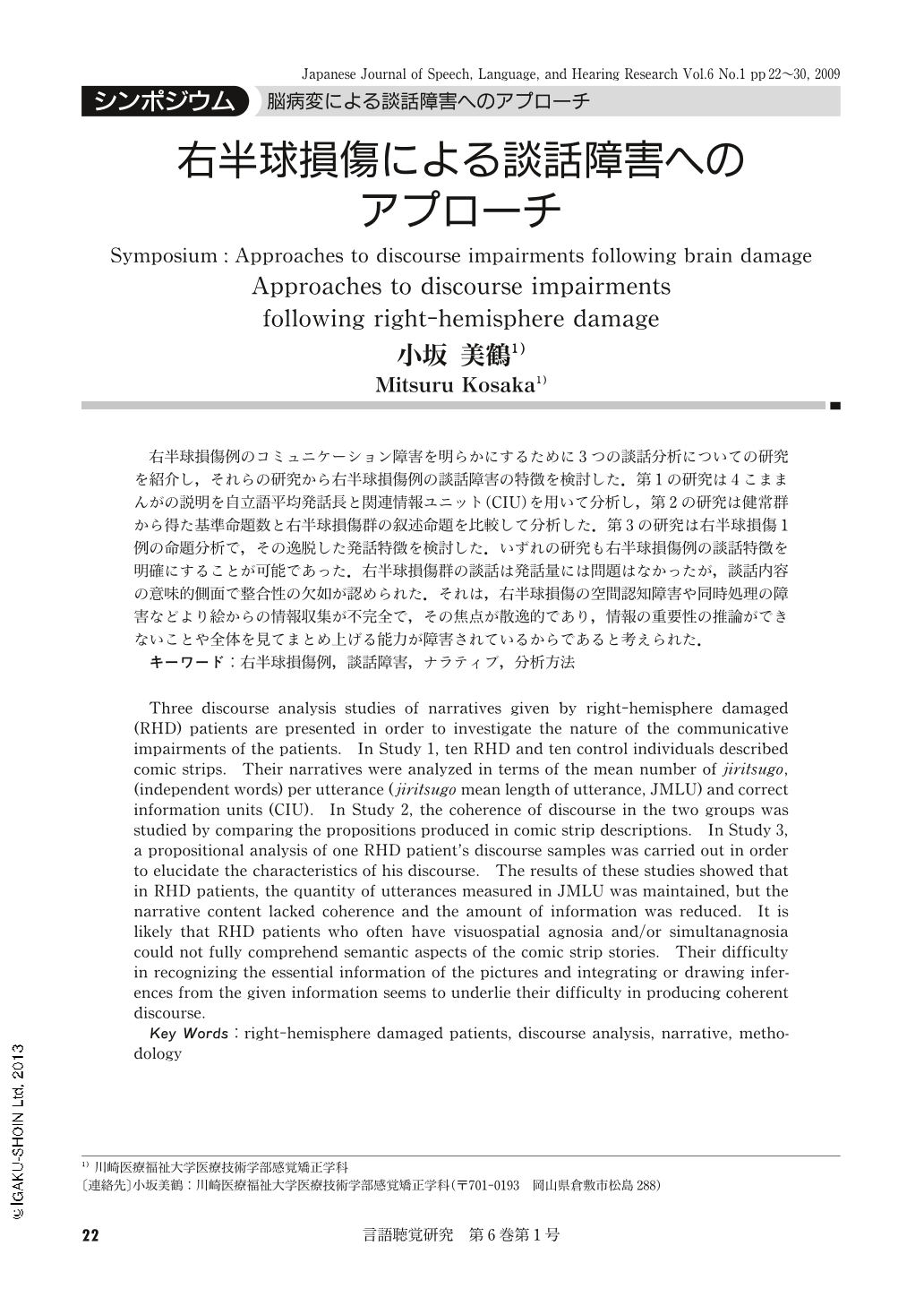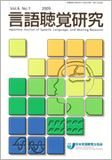Japanese
English
- 有料閲覧
- Abstract 文献概要
- 1ページ目 Look Inside
- 参考文献 Reference
- サイト内被引用 Cited by
右半球損傷例のコミュニケーション障害を明らかにするために3つの談話分析についての研究を紹介し,それらの研究から右半球損傷例の談話障害の特徴を検討した.第1の研究は4こままんがの説明を自立語平均発話長と関連情報ユニット(CIU)を用いて分析し,第2の研究は健常群から得た基準命題数と右半球損傷群の叙述命題を比較して分析した.第3の研究は右半球損傷1例の命題分析で,その逸脱した発話特徴を検討した.いずれの研究も右半球損傷例の談話特徴を明確にすることが可能であった.右半球損傷群の談話は発話量には問題はなかったが,談話内容の意味的側面で整合性の欠如が認められた.それは,右半球損傷の空間認知障害や同時処理の障害などより絵からの情報収集が不完全で,その焦点が散逸的であり,情報の重要性の推論ができないことや全体を見てまとめ上げる能力が障害されているからであると考えられた.
Three discourse analysis studies of narratives given by right-hemisphere damaged (RHD) patients are presented in order to investigate the nature of the communicative impairments of the patients. In Study 1, ten RHD and ten control individuals described comic strips. Their narratives were analyzed in terms of the mean number of jiritsugo, (independent words) per utterance (jiritsugo mean length of utterance, JMLU) and correct information units (CIU). In Study 2, the coherence of discourse in the two groups was studied by comparing the propositions produced in comic strip descriptions. In Study 3, a propositional analysis of one RHD patient's discourse samples was carried out in order to elucidate the characteristics of his discourse. The results of these studies showed that in RHD patients, the quantity of utterances measured in JMLU was maintained, but the narrative content lacked coherence and the amount of information was reduced. It is likely that RHD patients who often have visuospatial agnosia and/or simultanagnosia could not fully comprehend semantic aspects of the comic strip stories. Their difficulty in recognizing the essential information of the pictures and integrating or drawing inferences from the given information seems to underlie their difficulty in producing coherent discourse.

Copyright © 2009, Japanese Association of Speech-Language-Hearing Therapists. All rights reserved.


